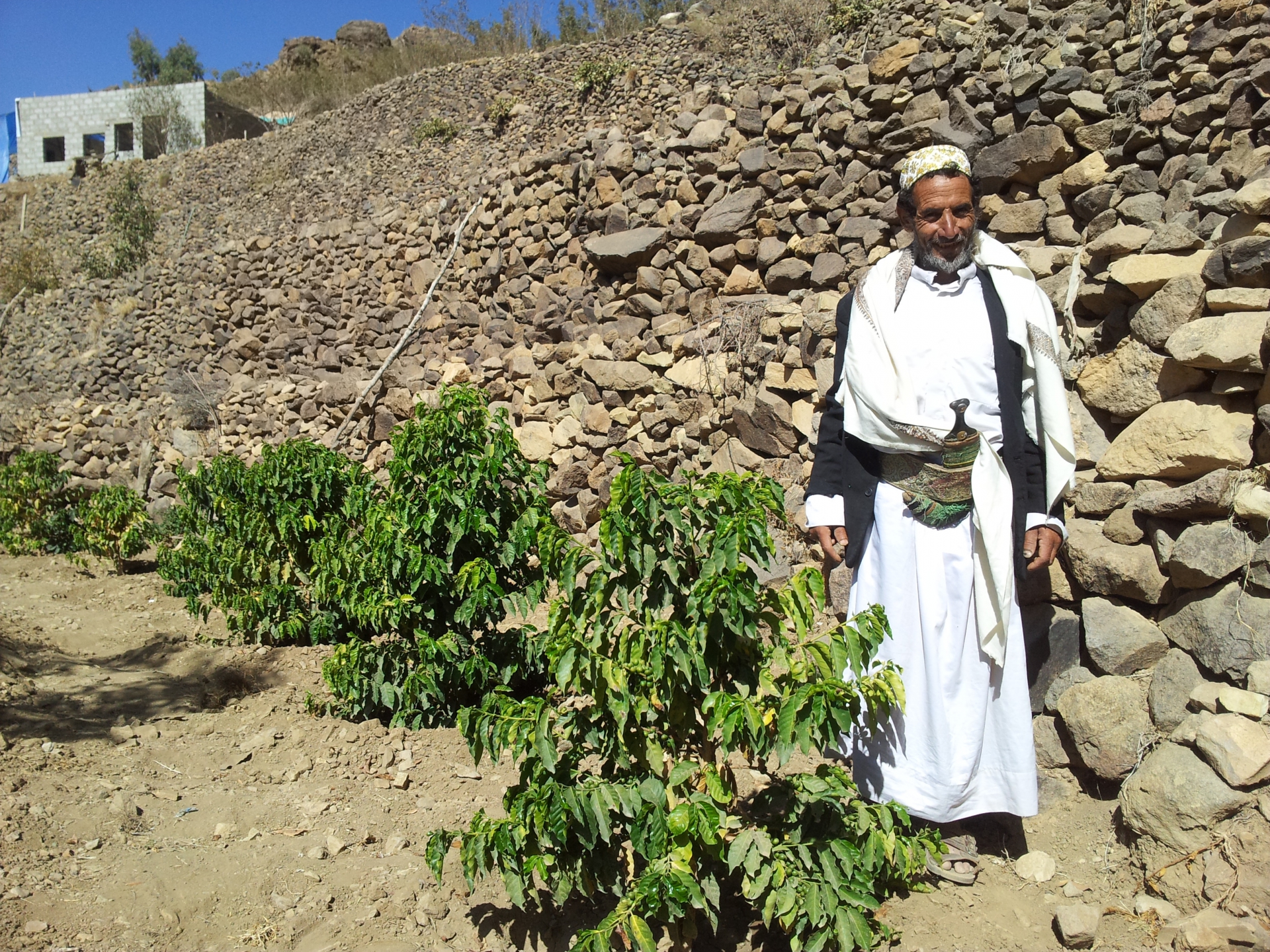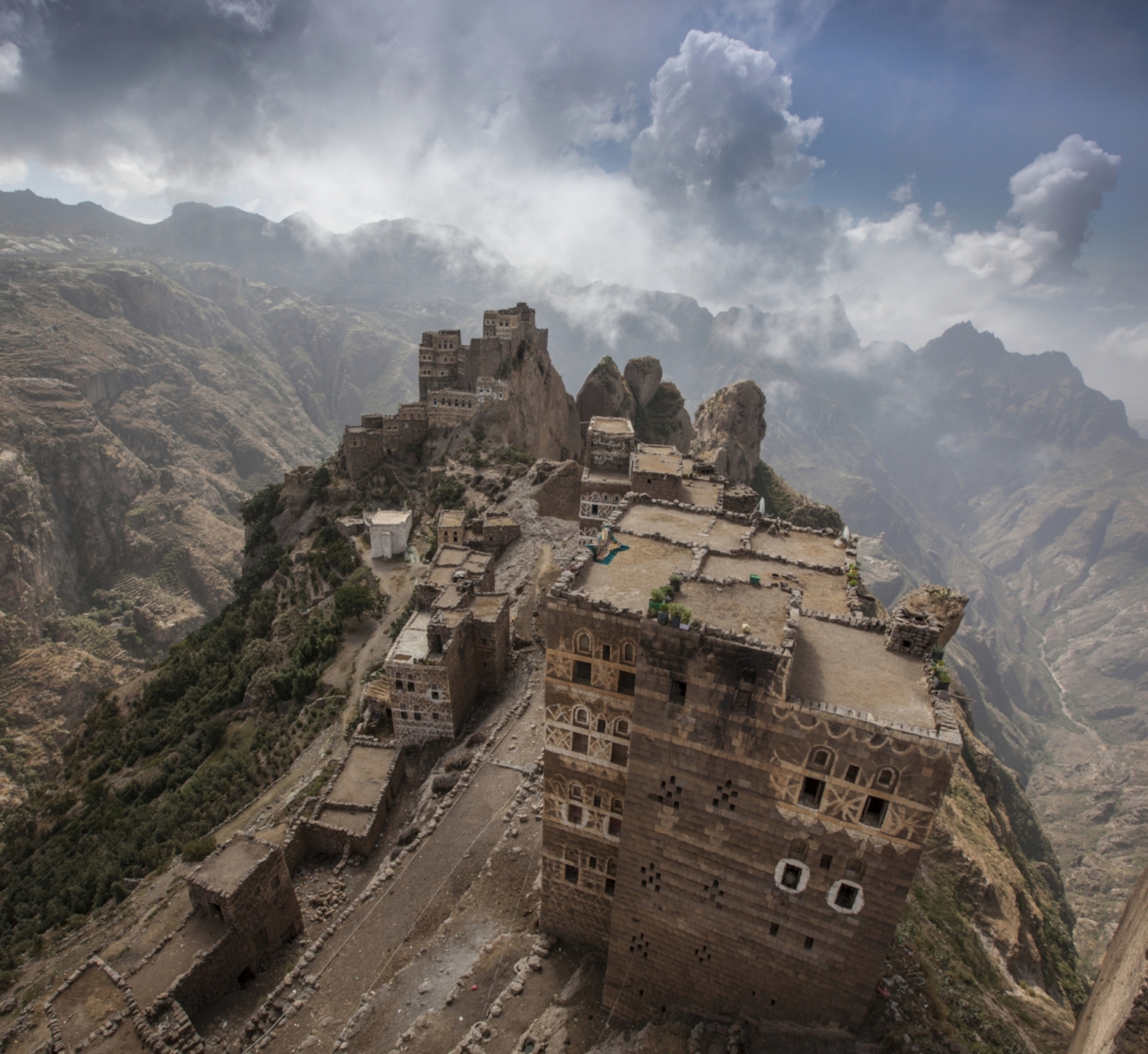We recently had the opportunity to taste a Yemeni coffee at Maruyama Coffee in Japan. We do not over-exaggerate when we say it was one of the best coffees we have ever tasted. This is not a story about that amazing coffee, in fact a whole book has been written on the adventures of that coffee (Port of Mokha), this takes a look back at the history of Yemeni coffee and their unconventional methods...
by
Natasha Freeman
History whispers that coffee has its origins in Ethiopia, but some of the best tasting coffee in the world comes from another country entirely. With 1200 years of coffee history, Yemen is home to the holy grail of coffee beans. The original Mokha. Which isn’t actually a bean, but the port from which the beans were shipped. With more than 3000 years of written history, some 1200 years of coffee production, and being the first country to cultivate coffee properly, Yemen has evolved as one of the earth’s most incredible coffee producing regions. It is home to the bean that every serious coffee connoisseur wants to taste, that aficionados and boutique roasters want to source, that importers and investors want a piece of, and that coffee lovers on the slight-up-and-up, lean forward in their chairs to talk about. Yemeni Coffee. Why is it so good? And where can we get some? Such is the start of a fascinating tale…

The Thirsty Child and the Old Soul
Coffee is traditionally known as the ‘child’ crop of agriculture, meaning it’s incredibly high maintenance. The plants need attention, they need care, maintenance, and investment. They also need water, the right amount of shade, and a ‘perfect range’ of temperatures to produce effectively.
Except for the plants in Yemen.
The Yemeni plant has developed ways to survive in extreme environmental conditions that no other coffee plant would. Yemen is hot, dry, and harsh. And yet, the Yemen coffee plant lives. It is true, the Yemeni plant still requires attention, and suffers under strained versions of its own unique climactic or environmental conditions (which is what caused the first drop in the availability of Yemeni coffee – similar to current circumstances in Tanzania, farmers were unable to keep up with the effects of climate change on their struggling crops and so began to replace their coffee plants with khat/qat), but the Yemeni plant is older in its ways, more practiced and wise. Where other coffee plants would perish, the Yemeni plant survives. And yet how?
“Unique root systems…What we have are secluded plants sitting in one of the most drought stressed areas of the world, that have slowly adapted over time and are producing fruit under extreme conditions”, says Alessandro Craparo, research scientist and founder of Science of Coffee. The result? A plant, essentially using every last drop of energy to produce fruit. The further result? “The most incredible, concentrated flavours,” says Craparo (who tasted Yemeni coffee at a conference in Ethiopia in 2010). “It’s as if the plant is squeezing every last little drop into getting these cherries out.” Think, the shiraz of coffee – heavy, deep, blueberry and wine tones; earthy, rich and from the word on the street, unforgettable.
Taste and The Ingredients of Holy
Taste does not come from the plant alone, but is greatly influenced by processing: milling, washing, drying. Yemeni coffee is also unique in this way. The beans are not washed. They are dried over an extended period with the fruit on, and then milled by a mortar and pestle process. Drying the beans with the fruit on infuses a depth of flavor into the bean that would not be brought out otherwise. The bean then reflects more truly to the region from which it came. Plant evolution, root systems, drying, milling – and specific climactic conditions – are all ingredients that contribute to making the Holy Grail of coffee. But now, where can you get it?
The Seven Day Journey
Basically, the first answer to that question is…you can’t. At least, not at the moment. High demand, limited supply, and now most significantly, war in Yemen, have created a situation where access to Yemeni coffee has become nearly impossible. While industry professionals, importers, roasters, and clued up connoisseurs are literally salivating with patient urgency for an opportunity to sample Yemeni coffee, the chances of doing so right now, are pretty much zero. Which is why the story of the Seven Day Journey got so much attention.
In recent years, a concerted effort toward rehabilitation and resurgence of the Yemen coffee industry has been implemented. Enormous amounts of money, effort, and well organized programs on the ground (see www.MaxiInfo.com, USAID, FeedTheFuture, and Coffee Quality Institute/CQI) are literally changing the face and potential future of the specialty-grade coffee industry in Yemen – plants are being cultivated, climate specific agronomy techniques perfected, farmer education programs implemented, and exporter relationships initiated. The Seven Day Journey is the story of three exporters escaping the escalating civil war that surrounded them in Yemen (bombs were actually dropping), and their weeklong journey - by foot, car, plane, and boat – to the SCAA (Specialty Coffee Association of America) 2015 conference in Seattle. “Their mission,” says research journalist, Nick Brown, “was to get approximately 100kgs of Yemen’s finest green coffee to Seattle, part of a larger journey to reintroduce the country’s specialty-grade coffees to the world.” Exporters Andrew Nicholson (Rayyan Coffee), Mokhtar Alkhanshali (Mocha Mill) and Shabbir Al-Ezzi (Al-Ezzi Industries) wanted to bring to light, for everyone, what was waiting and being produced in Yemen. And they succeeded. Resembling refugees themselves, the men arrived in Seattle, green beans in hand and wowed what has gone down as the most attended SCAA conference in the history of the event. Everyone wanted to know about Yemen coffee. The conference and industry responded as expected – with deeply bowed appreciation, gratitude, and fascination for the work being done on the ground.
Climate Analogues and Your Chances (A Case Study for the World)
Do not despair. For work is being done. While the war might prevent us from easily accessing Yemeni coffee, it is available and there are people on the ground in Yemen doing their utmost to revitalize the world’s oldest and most magnificent coffee industry, to enrich the global coffee experience. And if tasting Yemen’s coffee is temporarily impossible, take comfort in the fact that scientists, using climate analogues – or comparison statistics - are looking to Yemen and her Ingredients of Holy to find the secret to survival of the coffee industry as a whole, under mounting pressures of climate change. Yemen’s coffee plants, children with old souls, may hold the secret to saving plants dying in other regions from increased temperatures and decreased rainfall.
In the meantime, drink up. And watch as the rest of this fascinating tale unfolds…

Mokha-Java – the original mokha-java was comprised of beans from Yemen accidentally mixed with beans from the Indonesian island of Java. Sailors transporting Yemeni beans from port Mokha mixed the two during transport and one of coffees finest blends was born.